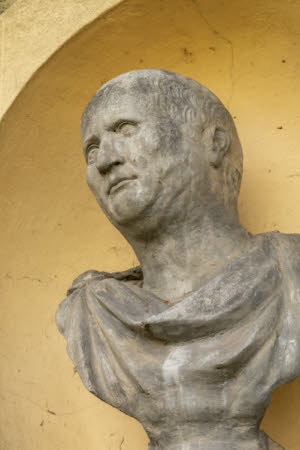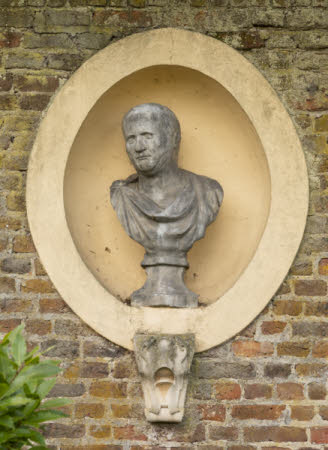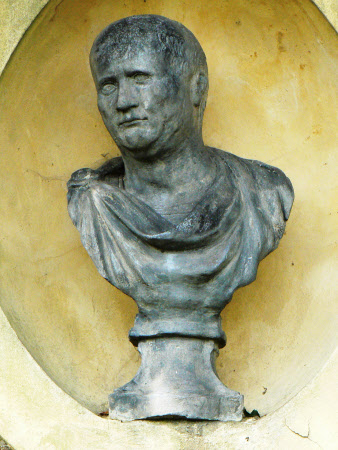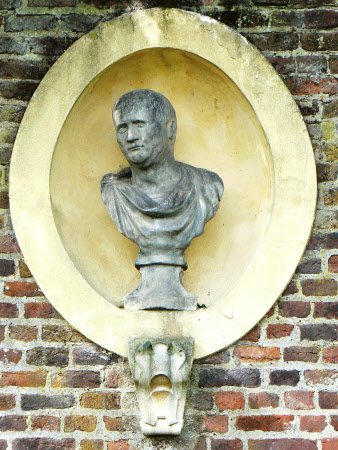Bust of a Roman, perhaps an Emperor
workshop of John Besnier (fl.1681)
Category
Art / Sculpture
Date
c. 1670 - 1672
Materials
Lead, Sandstone
Measurements
780 mm (H)425 mm (W)
Place of origin
London
Order this imageCollection
Ham House, Surrey
NT 1140367
Summary
A lead portrait bust of a Roman, perhaps an emperor, wearing armour and over this a cloak. One of thirty-eight lead busts made for the garden walls of Ham House in 1671-72, perhaps in the workshop of John Besnier, thirty-six of which survive in niches on the walls and on the north façade of the house.
Full description
A lead portrait bust of a Roman, wearing armour, with over his corselet a cloak, fastened with a brooch at the right shoulder. Thickset face, hair receding at the temples, looks slightly to his right. Mounted on a plinth, and placed on a sandstone console carved with a strapwork escutcheon, over a circle.This bust probably depicts a Roman Emperor and would have originally formed part of a sequence of the Twelve Caesars, however his features are not distinctive enough to allow identification. He is one of two busts of the same model at Ham (the other is NT 1140336). One of thirty-six lead busts displayed in oval niches in the garden walls and on the north façade of Ham House, probably installed in 1671-72, and recorded in the 1679 inventory of Ham House. The entire series was probably arranged in its present positions along the garden walls and on the north front of Ham House by the 6th Earl of Dysart, as part of improvements undertaken between 1798 and 1803. The busts may well, like other sculpture at Ham House, have been made in the workshops of the Besnier family, perhaps by John Besnier, who received a commission for lead statuary from the Duke of Ormonde in 1681. For a fuller discussion of the garden wall busts and their history and attribution, see NT 1140333. Jeremy WarrenJanuary 2022
Provenance
Probably made and installed in 1671-72, to the commission of John Maitland and Elizabeth Murray, 1st Duke and Duchess of Lauderdale. Thence by descent,until acquired in 1948 by HM Government when Sir Lyonel, 4th Bt (1854 – 1952) and Sir Cecil Tollemache, 5th Bt (1886 – 1969) presented Ham House to the National Trust. Entrusted to the care of the Victoria & Albert Museum until 1990, when returned to the care of the National Trust, to which ownership was transferred in 2002.
Makers and roles
workshop of John Besnier (fl.1681), sculptor
References
Avery 2013: Charles Avery, ‘Seventeenth-century Sculpture at Ham House’ in Christopher Rowell, ed., Ham House. 400 Years of History, New Haven/London 2013, pp. 158-77.



